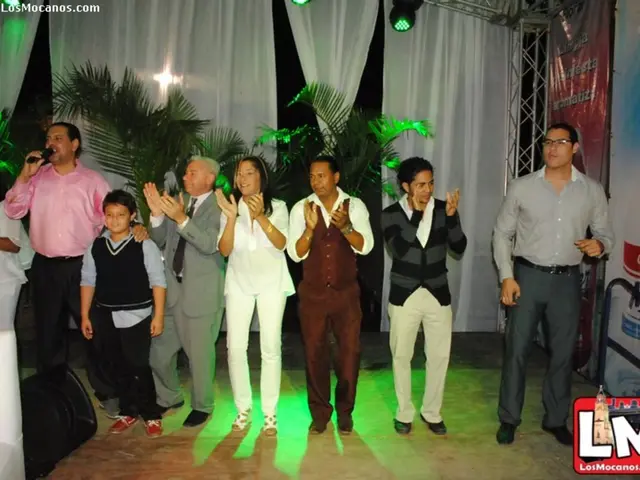"Disagreement among 'Ice Cream' merchants ensues due to Waldi's perceived lack of regard"
In the latest episode of "Bares für Rares", a popular German show where unique and rare items are auctioned, a set of ice cream advertising signs from the 1960s took centre stage. These signs, which were discovered 30 years ago in a junk shop by Anke, have a fascinating history and a surprising ending.
The signs, made of tin and not cardboard as one might expect, were produced during the 1960s, as indicated by the white teeth on them. Detlev Kümmel, an expert, explained that these signs were a testament to the era's advertising methods.
The first frozen ice cream in Germany was sold by Dr. Oetker in 1960, according to Kümmel. The company, which has since undergone a rebrand after a takeover, was one of the pioneers in selling frozen food in Germany, starting in the 60s.
The signs, despite their age, were in quite good condition, as Kümmel pointed out. An ice cream stick, priced at 50 Pfennig in the past, could be seen on some of these signs, offering a glimpse into the old prices.
The auction began with Walter "Waldi" Lehnertz making an opening bid of 120 euros for the ice cream advertising sign. However, Anke refused to sell the sign for 210 euros. Lehnertz, encouraged by Anke, countered with a bid of 350 euros.
Christian Vechtel, another bidder, then entered the fray with a bid of 380 euros, stating that he no longer respected Lehnertz. Lehnertz was offended by Vechtel's statement and put the required amount on the table.
Vechtel, in a jest, commented that Lehnertz probably only paid ten euros for the sign in the past. Lehnertz eventually got the bid for 400 euros. Host Horst Lichter praised the advertising material as clear, and Horst commented that this is an example of inflation.
The sellers, who had hoped for 400 to 500 euros for the signs, were pleased with the final bid. They could string the signs together and exchange them at will. Some corners have only become slightly yellow, a testament to their durability over the years.
In the end, it was a logistics professional who acquired the ice cream advertising posters. This individual, who discovered them about 30 years ago in a flea market, decided to buy them because they liked them. The signs now have a new home, a testament to their enduring appeal.







